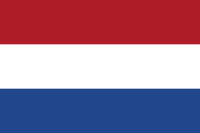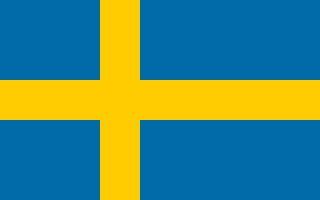NCDD is proud to be collaborating as a Media Partner in next week’s Online Facilitation Unconference! The Unconference is a free, fully digital convergence of folks from around the world interested in sharing and learning about virtual facilitation (i.e. facilitating and moderating online).
You can read the event description below or find out more and register for the Unconference at http://ofu13.eventbrite.com. You won’t want to miss this innovative event, so make sure to register ASAP! We’d love to see lots of NCDD members participating.
The Online Facilitation Unconference is part of the first-ever International Facilitation Week, which you can find out more about on the International Association of Facilitators website.
Facilitation Across Time and Space: How to Create Change Through Virtual Environments?
 Online Facilitation Unconference 2013
Online Facilitation Unconference 2013
A community-driven event as part of International Facilitation Week
When it comes to helping groups and communities achieve their desired outcomes, technology is playing an increasingly important role. But how can we really deliver the same value in virtual environments that we know how to deliver in person? How can we operate with the same integrity?
This informal, community-driven event will bring together experts and novices, professionals and volunteers, to share and learn together and to explore the challenges and opportunities we have before us.
As an unconference, the participants will be in charge of defining the topics and setting the agenda.
Come join us. Free to attend!
PS: More information will become available shortly. Watch this space for updates!
What?
An informal, community-driven event for people to share and learn about the exciting world of facilitating in virtual environments.
When?
This event will take place during and as part of International Facilitation Week, October 21-27, 2013.
- Start: Wednesday, 10/23 in the morning (Pacific Time)
- End: Friday, 10/25 in the evening (Pacific Time)
Cornerstone activities:
- 10/23 (morning PT): Kick-off for the Americas, Europe, Africa
- 10/23 (evening PT): Kick-off II for the Americas, Asia, Australasia (tentative)
- 10/24 (9-10am PT): Twitter chat “Facilitating a Diverse Group of People” (follow #facweekchat)
- 10/25 (evening PT): Closing
Why should I attend?
If you are already an online facilitation expert, this is a great opportunity to share your knowledge with others.
If you are new to online facilitation, this will be a great opportunity to make new connections with people who share your interest. Hopefully, we’ll all learn a few things!
This is an international event. Expect to meet fellow facilitators from these countries:












An “unconference”? How does that work?
An unconference is a conference where sessions are programmed and led by the attendees. They are hands-on, flexible, a little casual but very hard working. All the sessions are open for attendees to define, describe, and lead. You’ll find the format to be energizing and entertaining.
We will set up a website that will allow participants to suggest and schedule sessions on any topic they think is relevant. Participants can then sign up for any session they are interested in.
Session hosts are free to choose their preferred session format and delivery channel, e.g. webinar, conference call, Google hangout, chat… you name it!
Everyone is encouraged to help document the sessions they attend, share any lessons learned and provide feedback on what worked and what could be improved next time. We may provide volunteers to help with documentation and reporting.
We plan to offer some kind of kick-off and closing session as well as a “lounge” where participants can hang out in between sessions.
Potential session formats:
- Small-group discussion
- Classroom presentation
- Tool demo
- Panel disucssion
Potential session topics:
- How-tos
- Case studies
- Academic research
Do I have to be there for the entire 60 hours?
Of course not! We’re still working on the details, obviously, so thank you for bearing with us.
At the beginning (Wednesday), we’ll spend some time on introductions, identifying a first round of topics, suggesting and scheduling sessions etc. We hope to offer some kind of (synchronous) kick-off activity where people can first connect with one another. And we’ll have a website where this coordination can take place throughout the day and maybe even into the second day (asynchronously).
Our guess is this process will take a while. Plus we want to build in a minimum of lead time. So once a sessions has been scheduled, we want to make sure we can announce it to all attendees.
In the end, the average participant may only spend 2-3 hours total to attend a couple of sessions they are interested in. You are welcome to spend a lot more time, of course, but we don’t expect anyone to be present the entire 60 hours.
How much does it cost to attend?
The event is free to attend. We ask for a small donation to help cover costs.
Are you looking for sponsors?
Yes! We are looking for sponsors to help us offset the cost of organizing, technology setup and documentation. Details soon! Contact us if you’d like to get involved.
How will you spend the money?
We want to make sure every session gets properly documented. To that end, we’d like to hire a few students with facilitation background to write session summaries and help us capture the key take-aways. So essentially, this is a scribe / harvester role.
Another area we’d like to staff is our lounge area where people find a friendly welcome and receive help with any technology issues. This is a greeter / tech support kind of role.
We also want to report session impressions and outcomes in a timely manner via our website and social media. Maybe follow up with session hosts or participants, do a few interviews etc. This is a reporter / community weaver role.
Provided the event goes well (i.e. lots of interesting sessions, all well documented), we’d like to produce a final report. This will likely require the help of a professional editor and graphic designer.
If we have leftover funds, we will reimburse the volunteer organizing team, albeit symbolically (probably a fixed-sum stipend for everyone).
Finally, if we can pull it off, we’d love to do t-shirts (hey, who said you can’t have give-aways at a virtual event, eh?). We’re asking for t-shirt size in the sign-up form, just in case. However, we realize this is absolutely a nice-to-have and would definitely require very strong sponsor support.
Donor list
Thank you to all of our donors for raising a total of $235 so far:
Up to $50:
- Tim Bonnemann
- Sandy Heierbacher
Up to $25:
- Debra Bridgman
- Raines Cohen
- Laurie Dougherty
- Kathryn Elliott
- Betsy Morris
- 1 anonymous donor
If you’d like to donate, just choose “Participant + donation” in the sign-up form and enter the amount you’d like to give.
How can I get involved?
There are many ways people can support this project. Please contact us to be included in future communications. Our interactive website will be available shortly.
- Let us know your ideas. What would you like this event to be like?
- Join the planning team
- Help setting up our web infrastructure (we’ll keep it lean, but a few things need doing)
- Help get the word out in your community
- Suggest a session
- Host a session
- Attend a session
- Help with documentation
- Help with coverage during the event (e.g. social media)
- Become an event sponsor
- Become a media partner
- Write a blog post
- Share resources
Who are the organizers?
Core team:
- Tim Bonnemann, Founder and CEO, Intellitics, Inc.
- Tricia Chirumbole, Facilitator & Scrum Master, Mojo Collaborative
- Douglas Ambort
- Helen Wythe
- Fedor Ovchinnikov, Participatory Leadership Consultant and Facilitator
Supporting members:
- John Kelly
- Birgitta von Krosigk
Want to join the organizing team? Please contact us to be included in future communications.
Media partners
Thank you to our media partners:
Please contact us if you’d like to become a media partner.

 MindMixer
MindMixer

